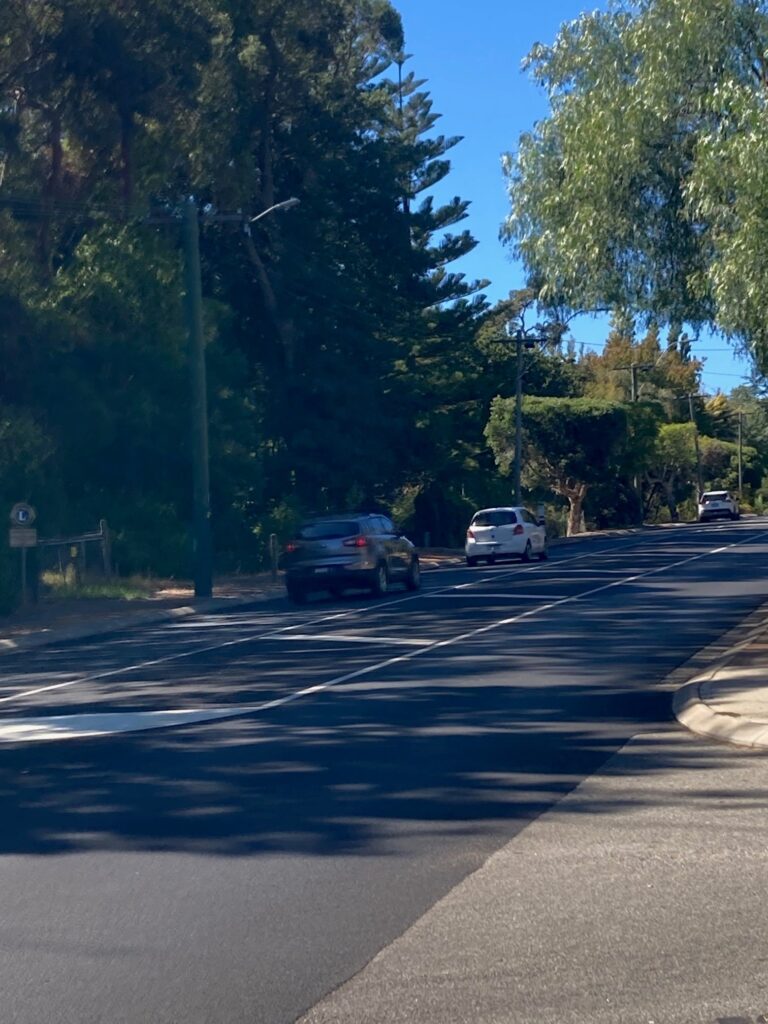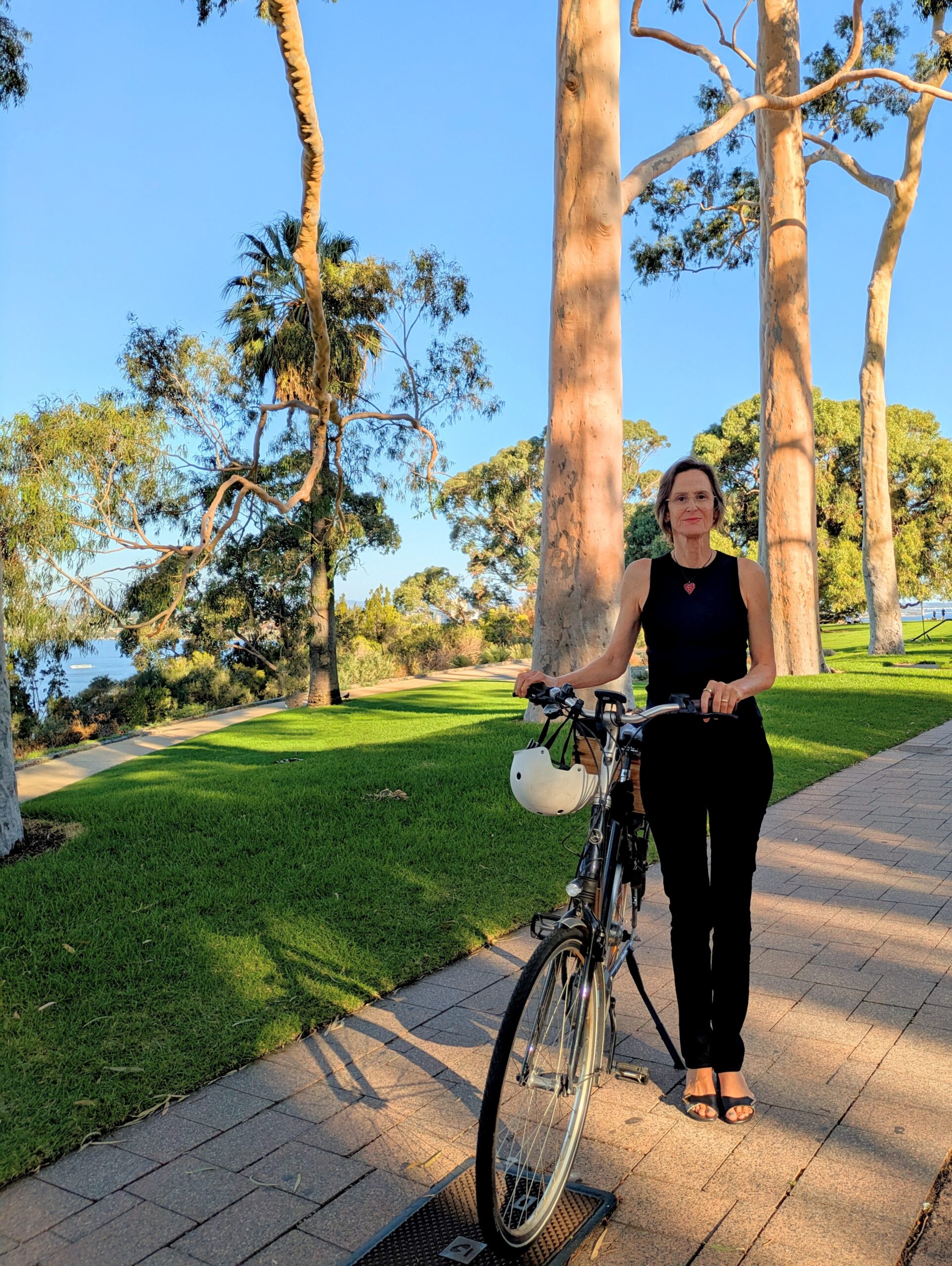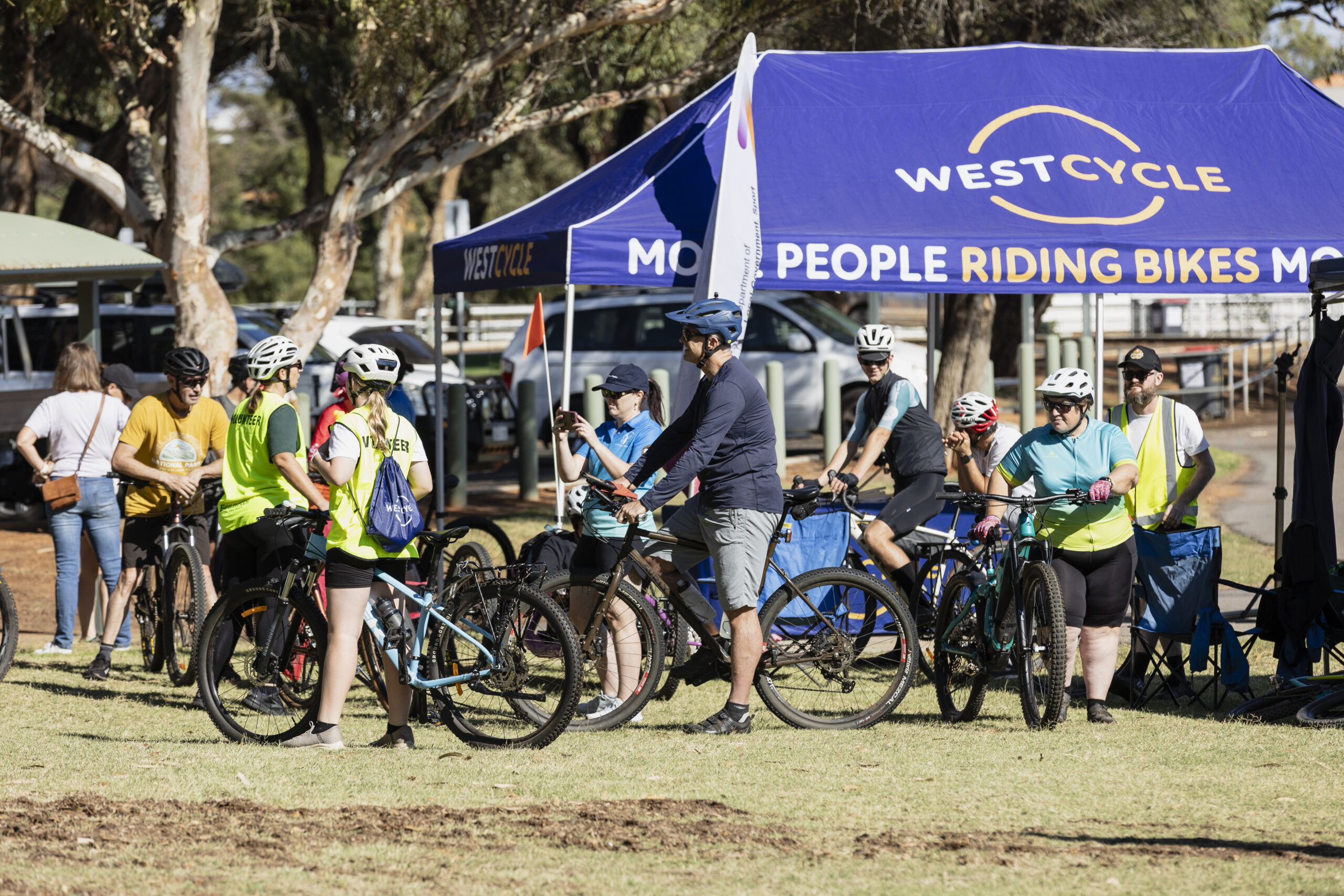City says new works are an ‘interim measure’ but a cycling lane remains a long way off

Recent works on the hilly section of Kalamunda Road expanded its central painted island and reduced it from two lanes to a single wider 3.7m lane with no marked cycling lane.
In response to WestCycle queries, the City of Kalamunda said while long term plans do include a bike lane on the road, the current works were a budget-restricted “interim measure” designed to, “improve road safety at intersections and along the route.”
“The needs of cyclists have been considered as part of these works with the provision of wider traffic lanes and a painted median,” the City said, noting the median would, “result in a travel speed reduction. It also allows vehicles to safely turn as well as to overtake slower moving cyclists at a reduced risk of encountering oncoming traffic.”
Its 2017 Cycling Plan does call for cycling lanes along Kalamunda Road, but timeframes are not specified and dependent on financing from local, state of federal sources. However these potential funding sources often come with criteria that rule out certain works – for instance WA Bike Network grants do not extend to unprotected bike lanes as they are not deemed to adequately protect people who ride bikes.
The City said further works on Kalamunda Road would not come up again for consideration until “some time beyond 2030.”
Routes into the Hills
In the meantime it highlighted Gooseberry Hill Road and the Zig Zag as preferred cycling routes into the Kalamunda area.
“…use of Kalamunda Road by commuter and recreational cyclists (i.e. cyclists other than experienced on-road cycling training groups) is very low, given the steep grades on the escarpment, high traffic volumes and lack of cycle lanes,” it said.
“On-road cycling training groups typically cycle in larger groups, often riding two abreast. This makes them more visible and helps ensure drivers pass bike riders at a safe distance.”
But some cyclists have cast the Kalamunda Road changes as a “wasted opportunity” to better accommodate all road users. Some of those comments are here.
Crossing unbroken lines: Driving on the painted island
To comply with the 1.5-metre passing rule (where speed limits exceed 60km/h) especially if a group of cyclists is riding uphill, motorists are obliged to cross the continuous line markings of Kalamunda Road’s new painted island.
This is authorised in the WA Road Traffic Code, although not all motorists may be aware of it. CoK said it would not be installing any educational signage, “as this would lead to visual clutter and associated safety hazards…The education of drivers would be the job of State Government.”











